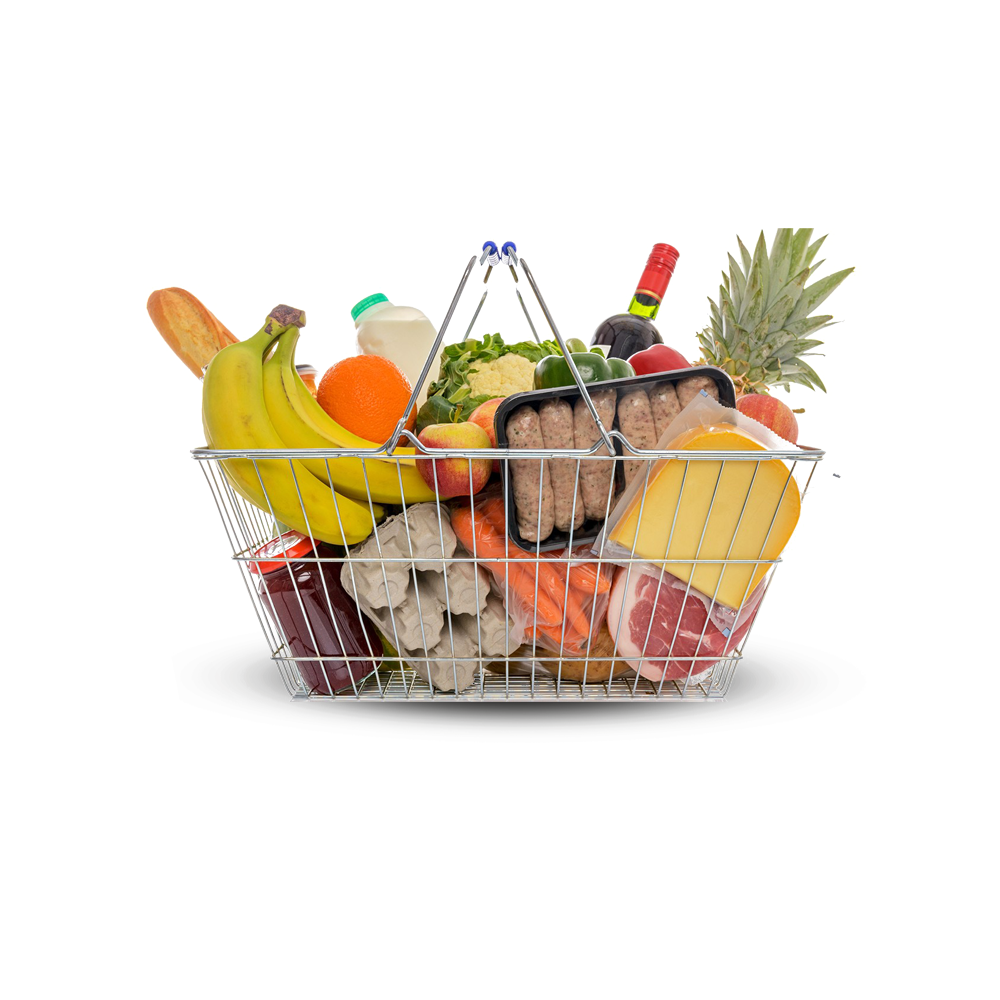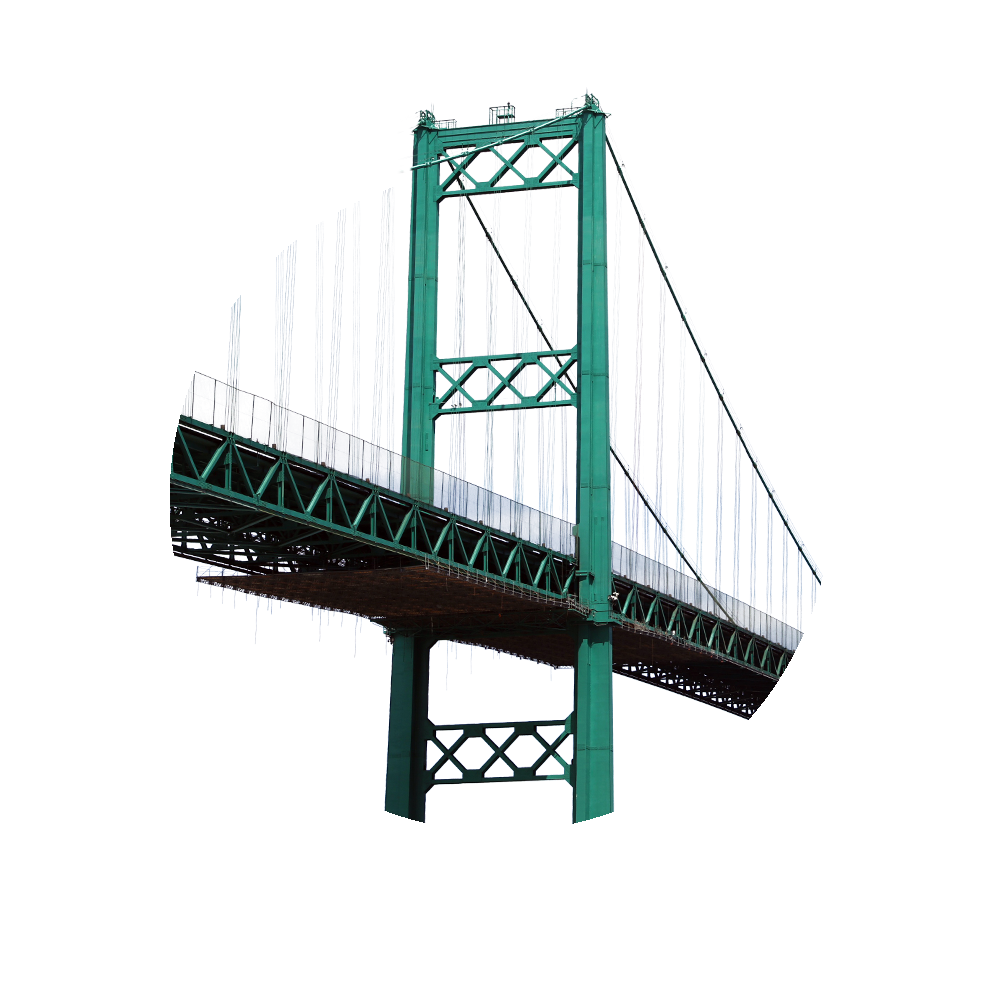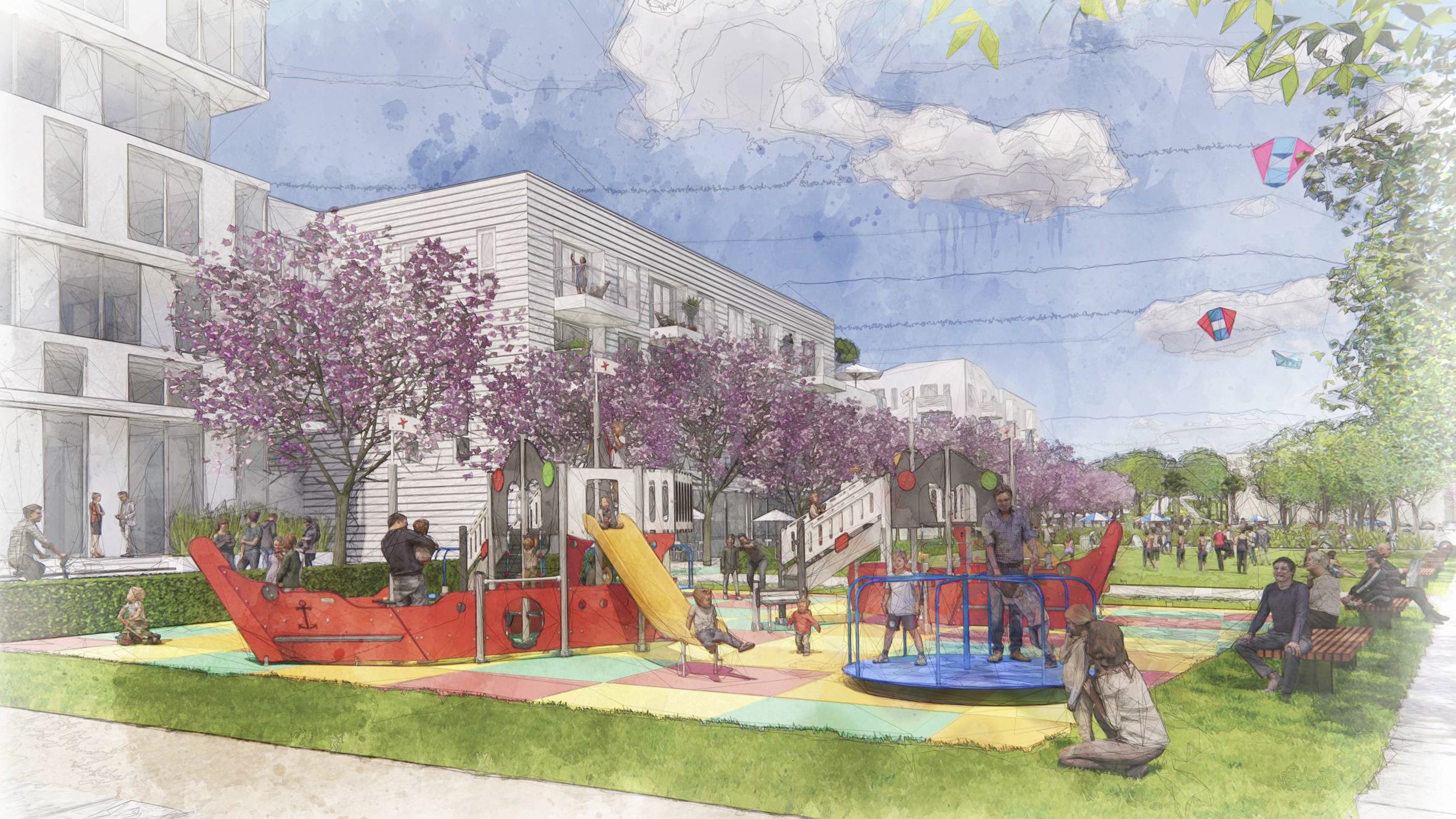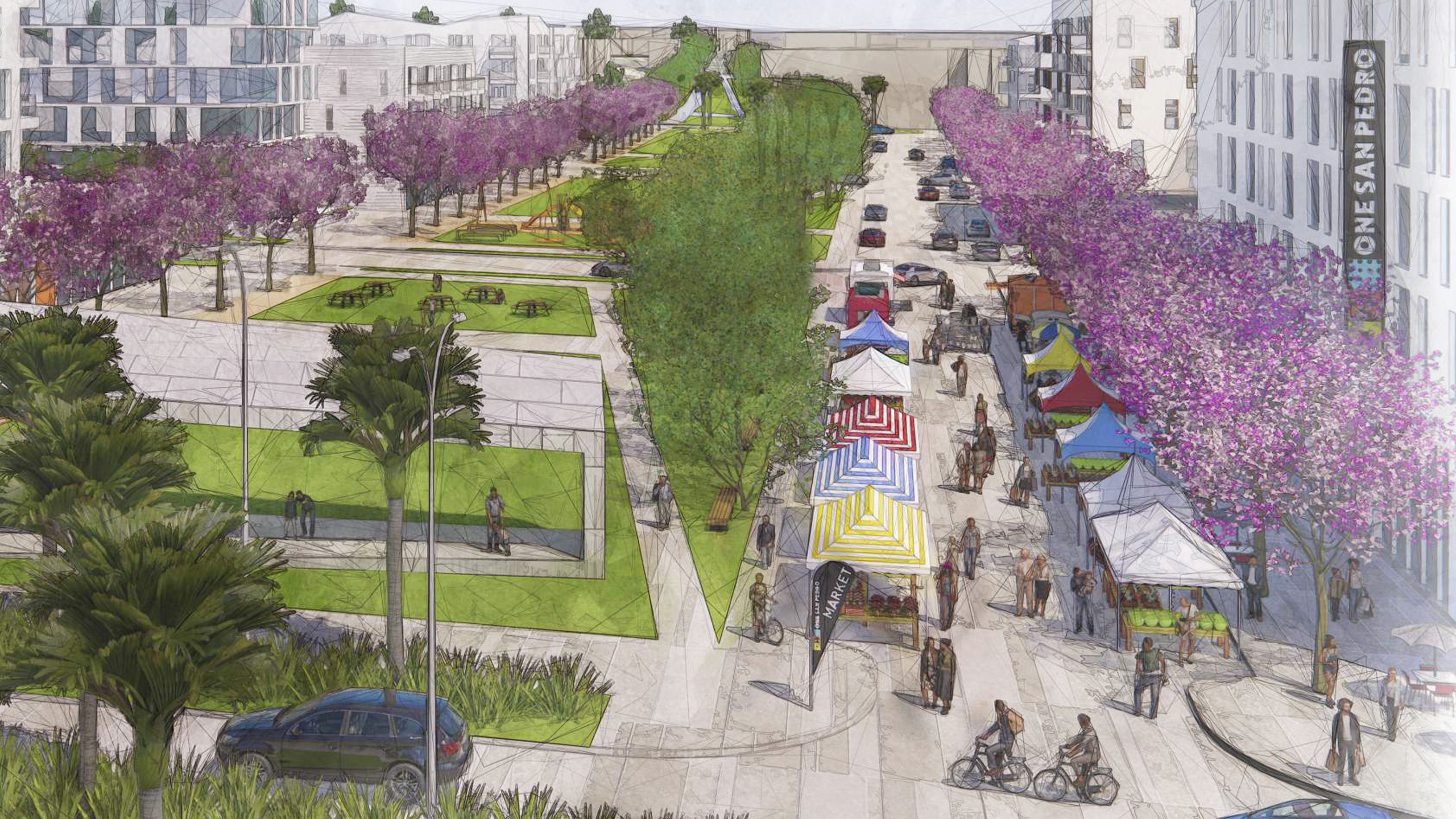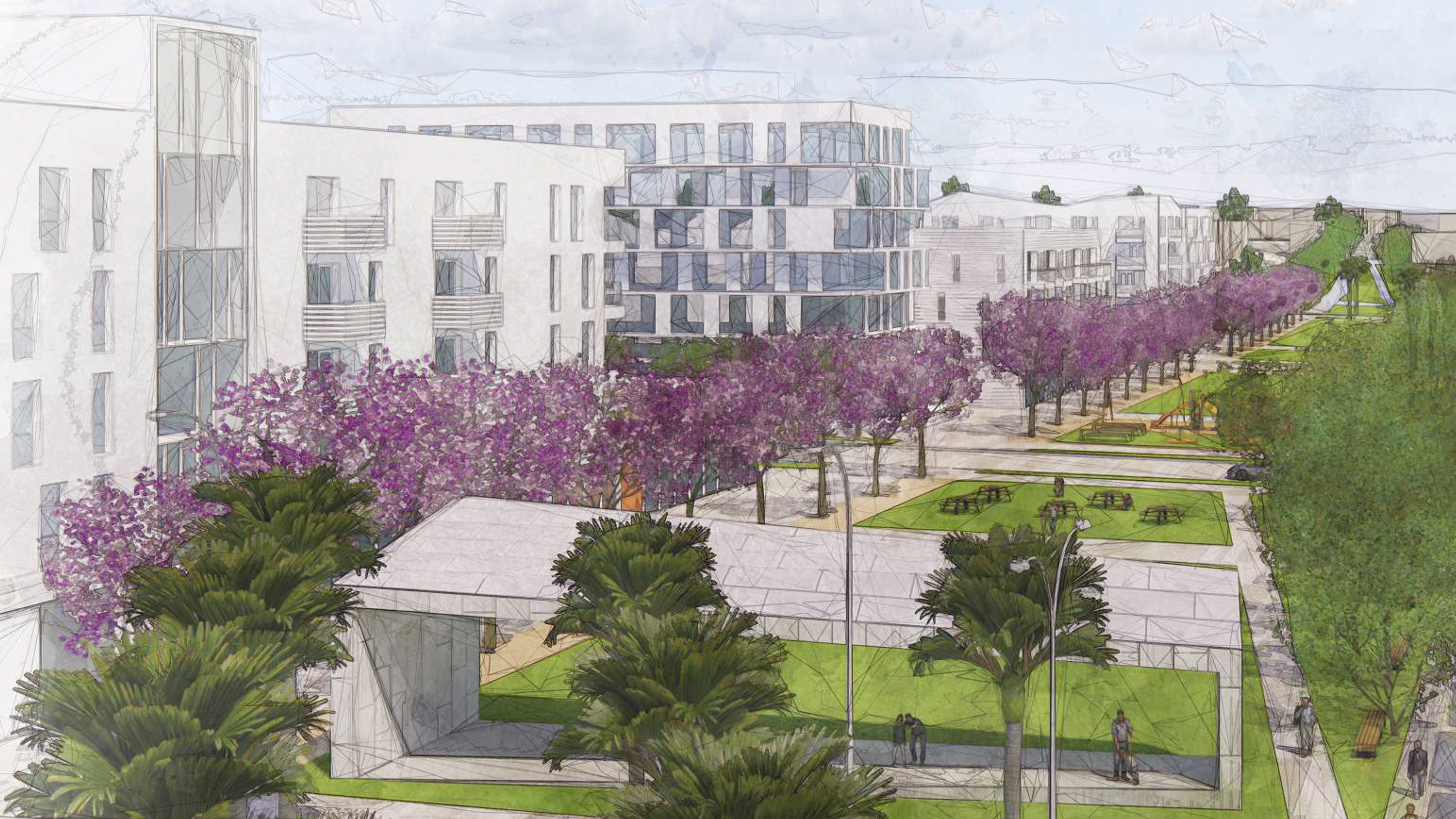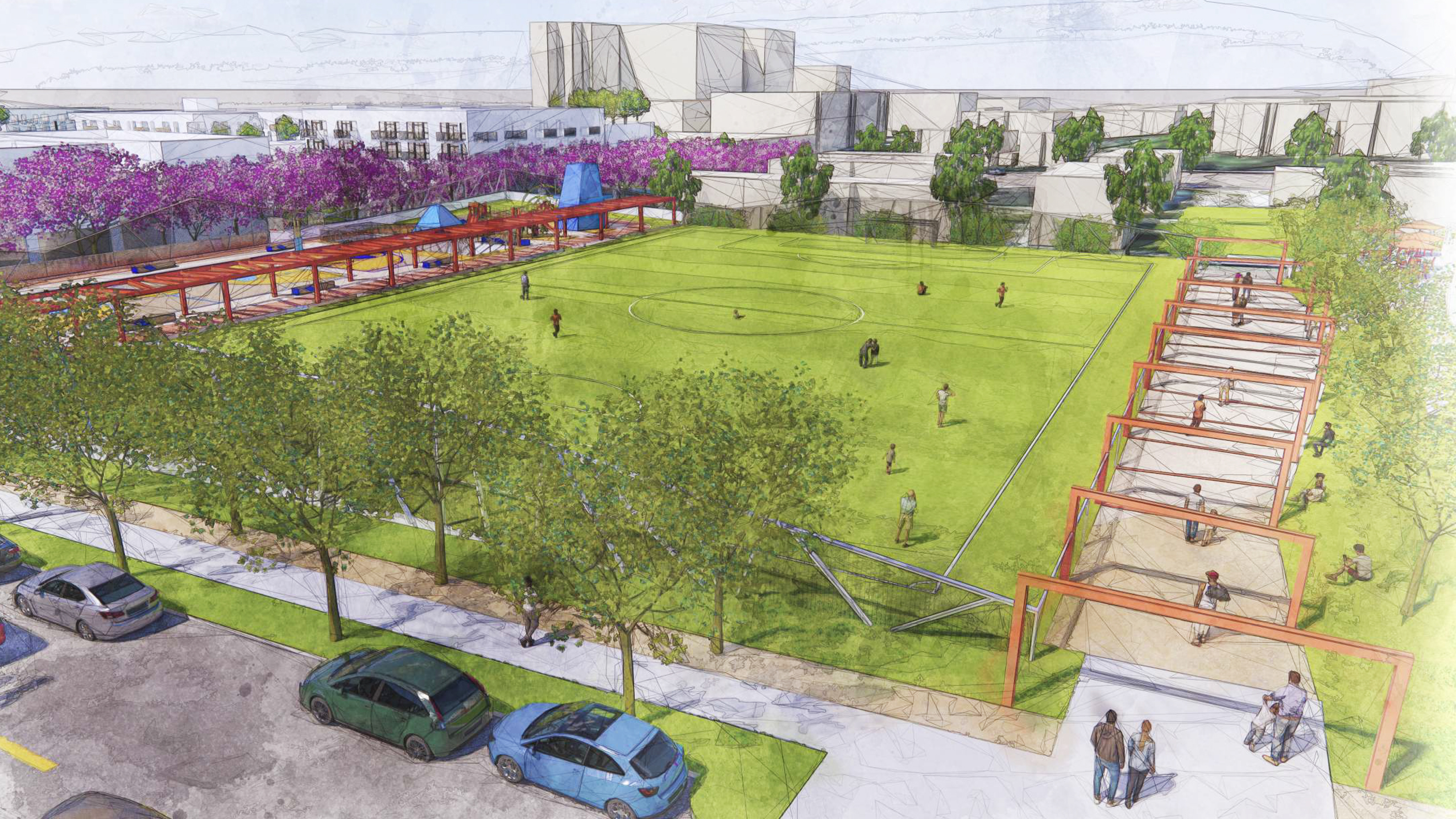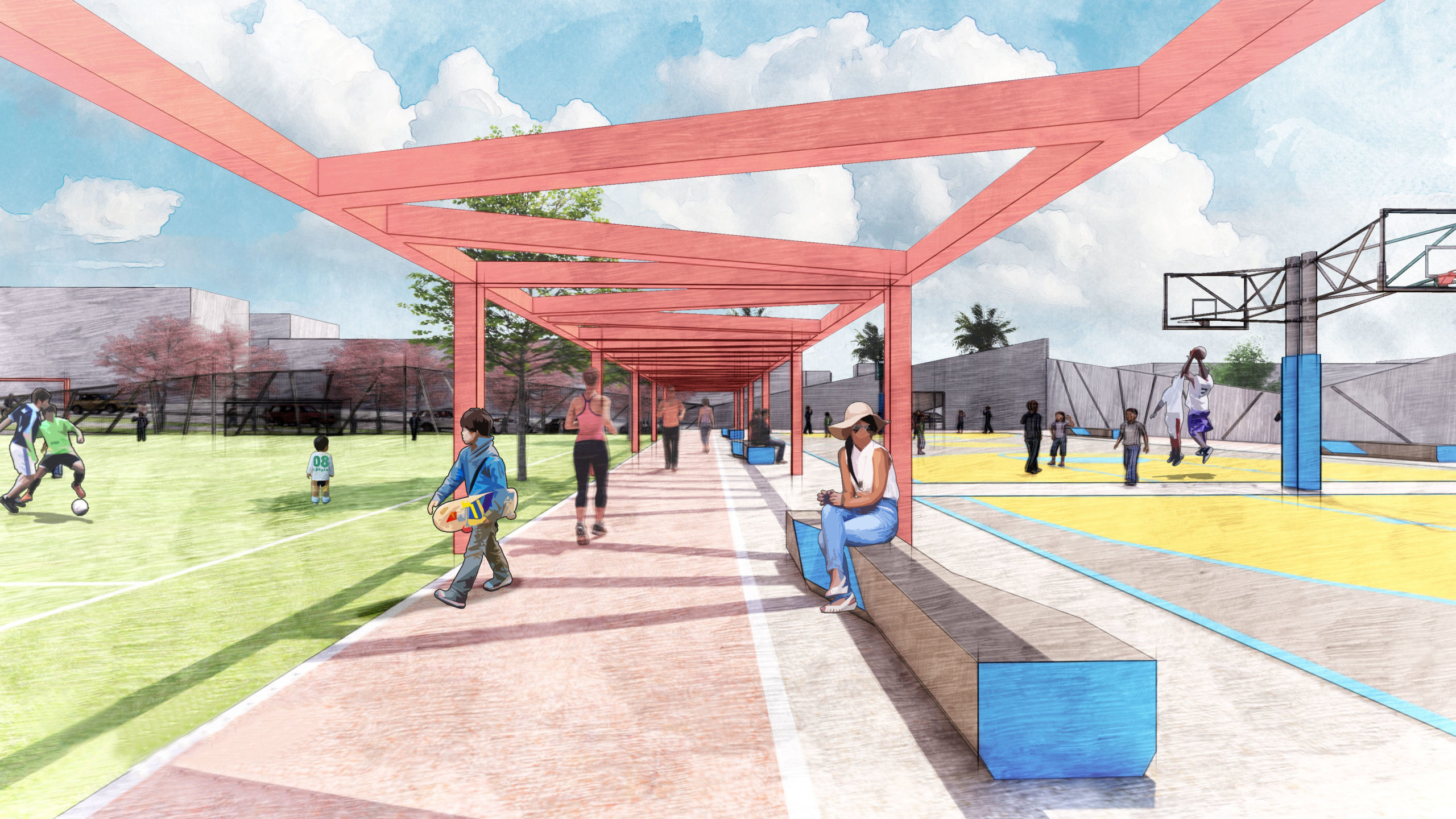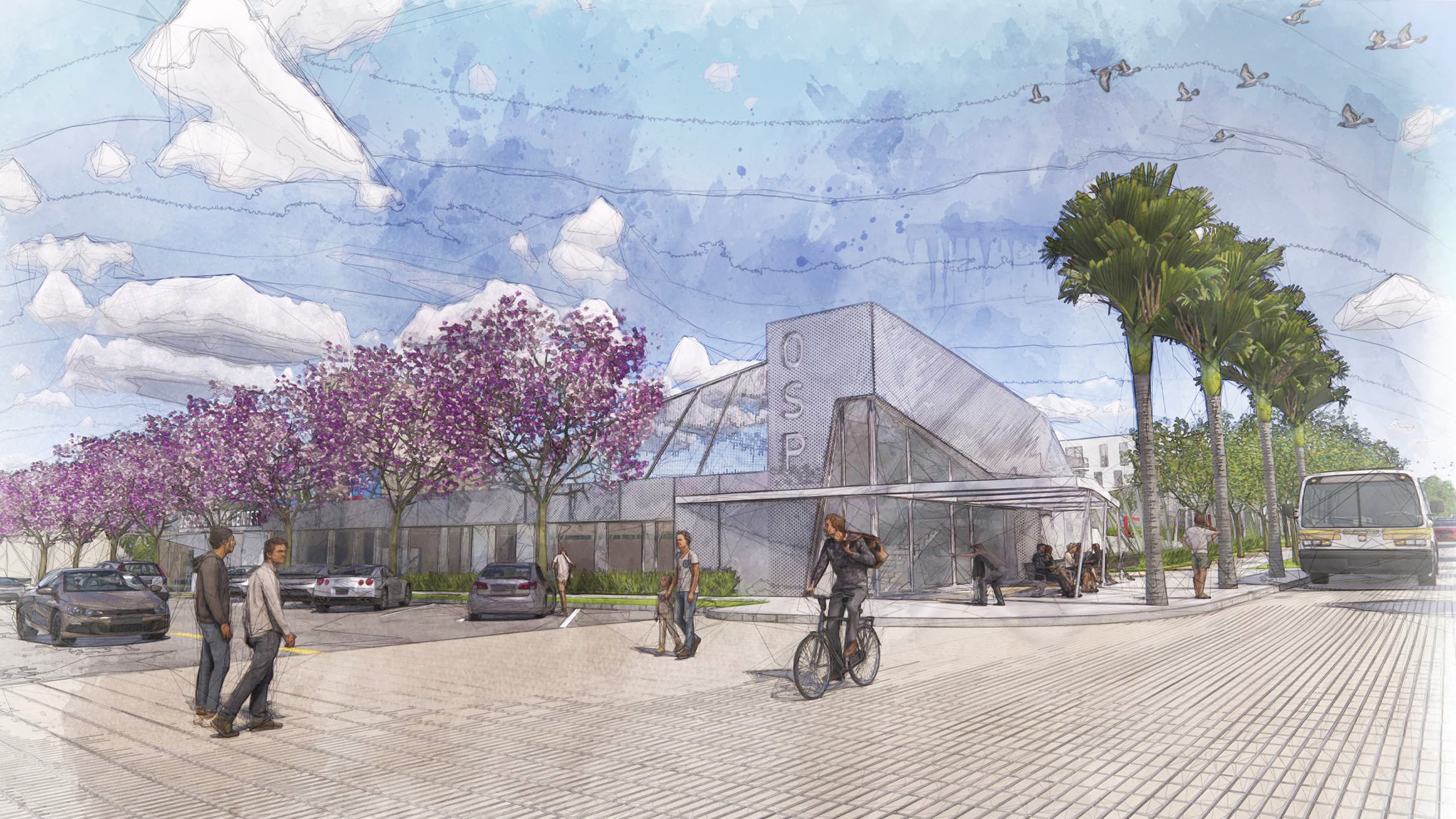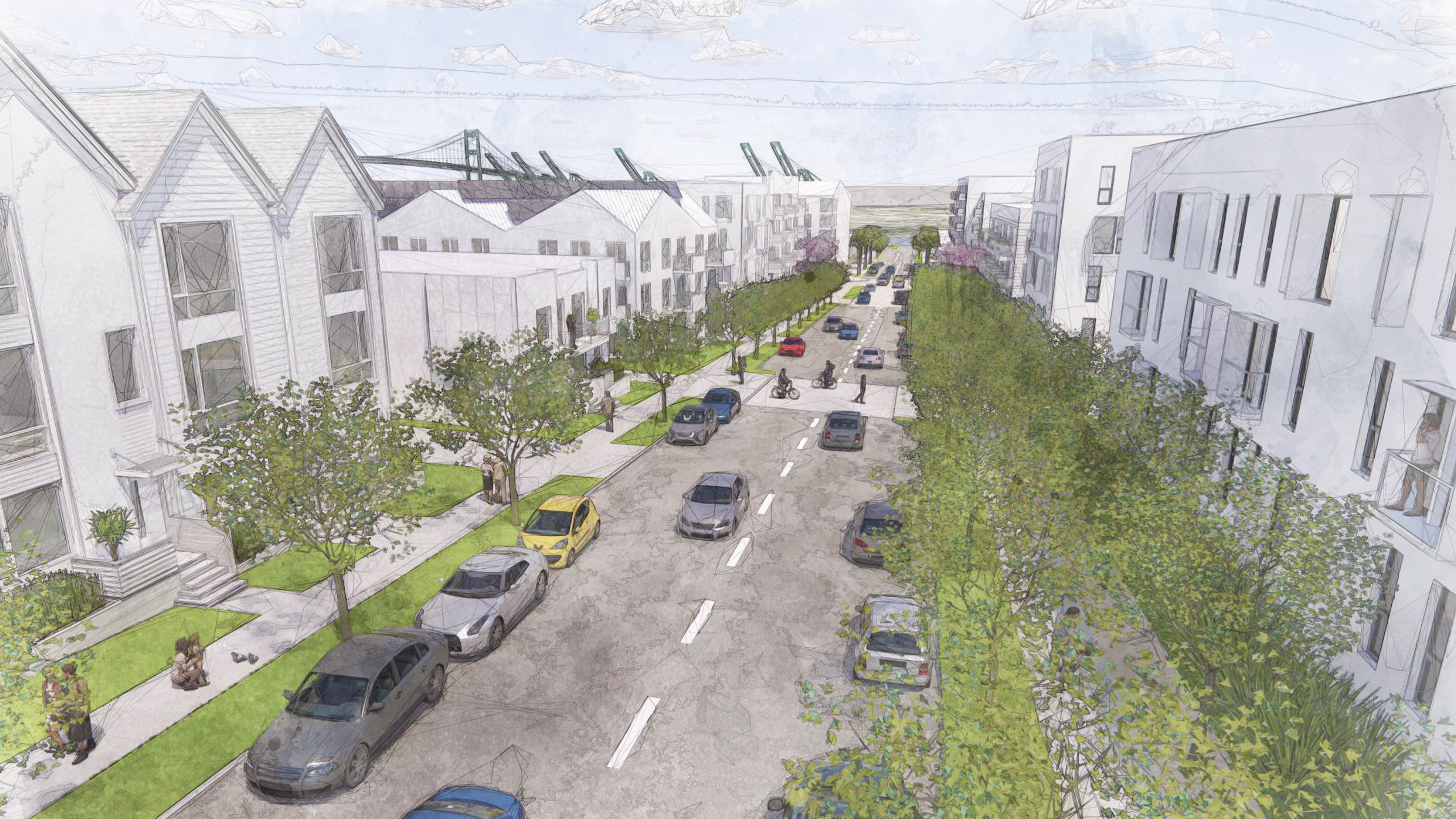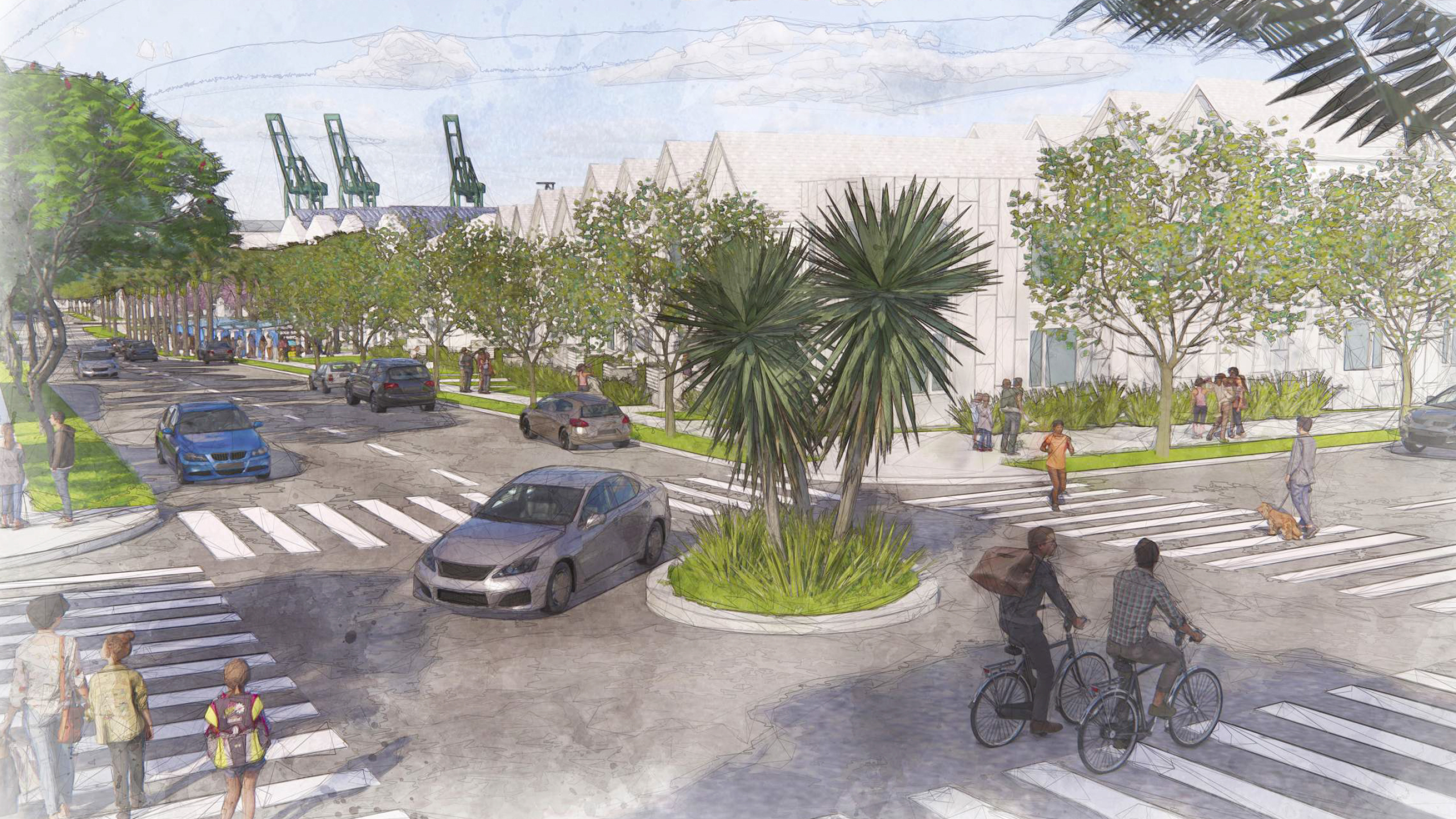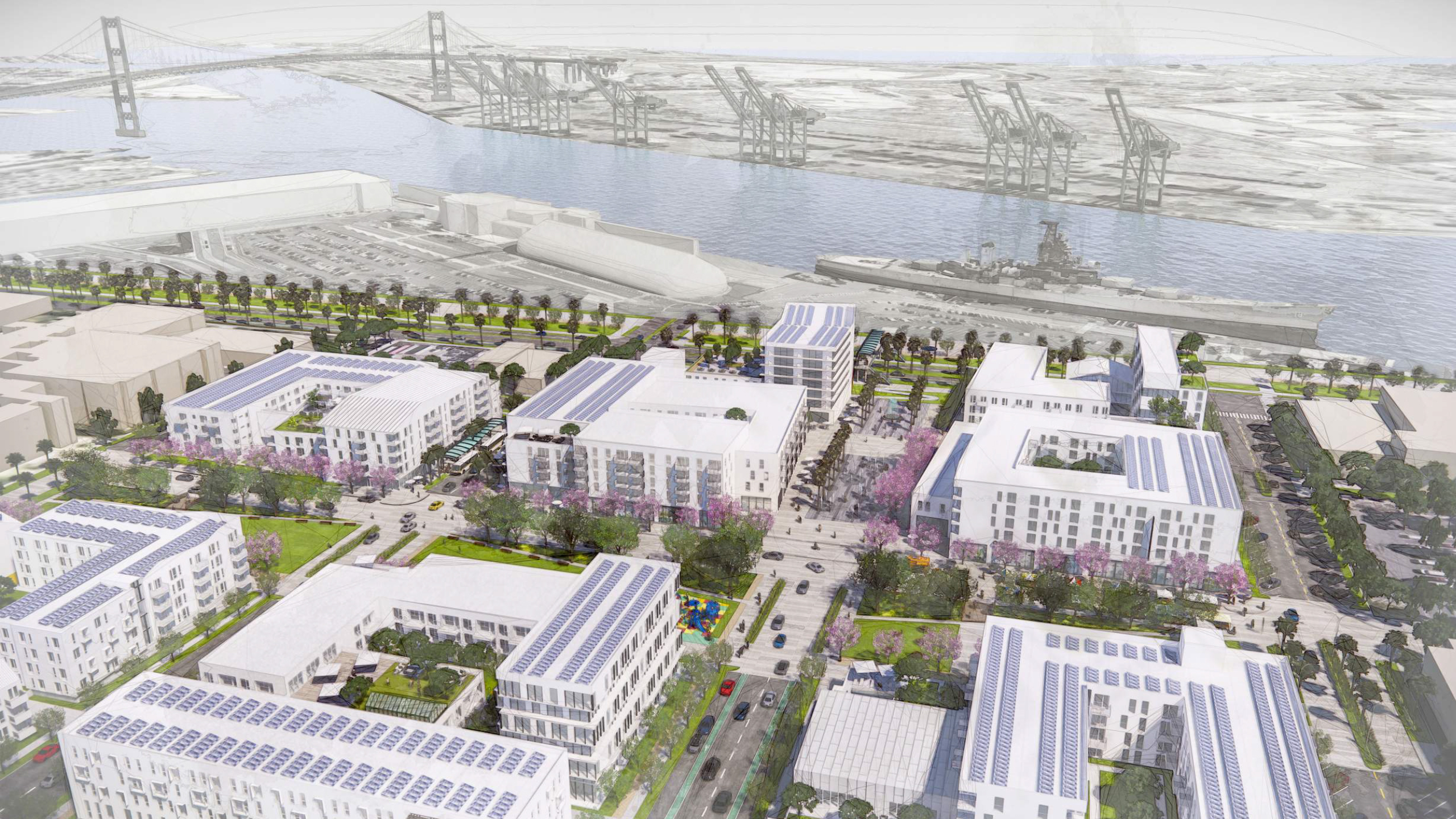Vision
A neighborhood families are proud to call home.
One San Pedro will be a safe, thriving mixed-income neighborhood that will serve as a model for other revitalization efforts by building on its existing assets to create high quality housing options, neighborhood-serving retail and economic activity, parks and recreational opportunities, walking and biking streets, and a variety of supportive services.
What is
Rancho San Pedro?
The Rancho San Pedro site is a 478-unit public housing community located in the San Pedro area of Los Angeles.
Home to hundreds of families and spanning 21 acres, The Rancho San Pedro site sits between the Barton Hill neighborhood to the north, and Downtown San Pedro to the south. The Port of Los Angeles, on the east, is visible from virtual every vantage point.
Initially constructed in 1942 and expanded in 1951, Rancho San Pedro was built to house Department of Defense workers following World War II. The property was transferred and converted to public housing by the Housing Authority of the City of Los Angeles (HACLA) in 1952.
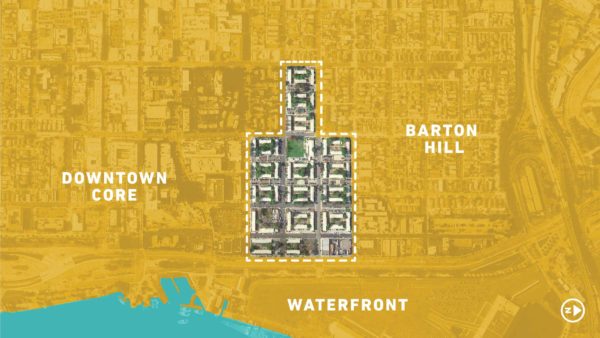
At nearly 70 to 80 years old, the buildings and systems at Rancho San Pedro have reached the end of their useful life. In 2015, HACLA, in cooperation with Los Angeles City Council District 15 and the Mayor’s Office of Economic Development, commissioned a feasibility study to determine the Highest and Best Use and Development Potential of the site.
The study concluded that replacing and expanding the available housing – both affordable as well as market-rate– would be the Highest and Best use of the public property. The property’s location, size, and redevelopment potential also offer the chance to include additional community benefits, which have been identified in the San Pedro Community Plan.

One San Pedro Transformation Plan
Developed through a two year collective planning process with residents, stakeholders and community leaders.
Gallery
Guiding
Principles
One San Pedro is a neighborhood that...
The design of the building and spaces incorporate the principles of crime prevention through environmental design (CPTED) and programmed to encourage ownership and activity by residents.
A new network of connected community spaces, including indoor and outdoor areas, provides unique opportunities for residents to get active, participate cultural events, and engage with one another.
An enhanced and expanded network of transportation facilities including pedestrian, bicycle, public transit, and streets, creates a safe and pleasant environment for resident to navigate through the community.
From an expanded community garden and kitchen, plus a new health clinic and wellness center, the redeveloped community will support and empower residents to be mentally, physically, and emotionally healthy.
With resources, training, education, and leadership development provided through a collaboration of existing service providers, residents will have access to the tools to help them to achieve their own personal goals whether in school or in the workforce, while becoming leaders of the community.
With strong community connections and limited nearby affordable housing options, the housing program uses a “build first” approach and is phased to minimize the relocation of and disruption to current residents.
Blending replacement housing units with other affordable and market-rate housing opportunities, including homeownership, creates a community that welcomes individuals and families across all walks of life and provides a ladder of housing opportunity.
From the beginning, residents and community stakeholders have been actively engaged not only as participants, but also as champions, stewards, and the ultimate beneficiaries of the plan.
The need is now, therefore, in addition to major redevelopment of the site, the plan focuses on incremental investments and the provision of essential services today while working on the larger changes for the community.
Urban Design
Strategies
The redevelopment program for Rancho San Pedro will be designed with the following urban design strategies
One San Pedro shall enhance physical and programmatic connections within and beyond the project area, to make walking and biking more viable forms of mobility for reaching more daily essentials and activity.
One San Pedro will have play opportunities that are designed and programmed to support childhood growth – providing a variety of safe, accessible, healthy, and fun environments ranging from youth sports fields to playgrounds, gardens, and a splash pad.
One San Pedro will integrate a variety of outdoor recreation spaces and trails, as well assupporting health-related uses and amenities along the Wellness Trails on First and Second Streets, and around the Linear Park.
One San Pedro will include a well-curated public art program, designed to extend the Arts and Cultural District through the site, utilizing public outdoor spaces, a circulation network, building facades, and amenity spaces.
One San Pedro strives for environmental stewardship within an urban environment, while helping the larger community adapt to the impacts of climate change, through a strong foundation of programmatic principles and design strategies.
Development
Timeline
The One San Pedro Transformation Plan provides a 20-year blueprint for Rancho San Pedro and surrounding community.
The planning and implementation of One San Pedro will be a multi-phase, redevelopment strategy informed by the guiding principles, existing conditions and resources available, adapting to evolving conditions throughout the build-out timeline. Development will include new residential development, resident relocations, infrastructure improvements, and creation of the backbone organization that will support the sustainability of One San Pedro.
This includes making immediate investments in the physical landscape to begin addressing community concerns and laying the foundation for the vision for One San Pedro. This could include but is not limited to improvements to the local transit services, community tree plantings, façade improvements of nearby properties, and tactical urbanism interventions.




